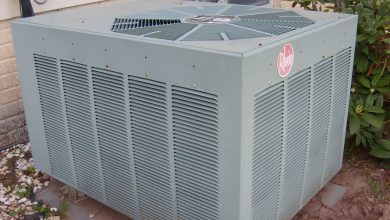Onion Yield Per Acre

Understanding the Potential of Onion Farming
Onion farming is a profitable venture that has the potential to yield high returns for farmers. This crop can be grown in different regions and climates, making it versatile and adaptable to various environments. Onions are used widely in cooking, making them a staple ingredient in many households around the world.
One of the advantages of onion farming is that it requires minimal investment compared to other crops. Farmers can start with small plots of land and gradually expand as they gain experience and knowledge about onion cultivation. Additionally, onions have a long shelf life, which means that farmers can store their harvests for extended periods without worrying about spoilage or losses.
Onion farming also provides employment opportunities for many people along the value chain, from planting to harvesting, packaging, transportation, and marketing. As demand for onions continues to rise globally due to population growth and changing dietary habits towards healthier foods, there is enormous potential for farmers who specialize in this crop. By adopting modern technologies such as irrigation systems and mechanization tools like tractors or planters combined with proper agronomic practices such as soil preparation techniques fertilization strategies weed control measures pest management approaches water management methods harvesting best practices post-harvest handling procedures among others; onion growers can maximize their yields per acre while minimizing costs thereby increasing profits significantly over time
Factors Affecting Onion Yield
Onion yield can be affected by various factors, such as soil quality, climate conditions, and pest infestations. One of the most important factors that affect onion yield is the type of soil used for cultivation. Onions grow best in well-drained soils with a pH level between 6 and 7.5. Soil that is too acidic or alkaline can negatively impact onion growth and reduce yields.
Another factor that affects onion yield is weather conditions during the growing season. Onions require cool temperatures during their early stages of growth but need warm temperatures to mature properly. Extreme heat or cold temperatures can stunt onion growth and reduce yields significantly.
Pests and diseases also play a significant role in reducing onion yields. Common pests include thrips, maggots, mites, and nematodes while common diseases include downy mildew, purple blotch, and white rot disease. Proper management strategies such as crop rotation, use of resistant varieties, timely application of pesticides/fungicides are essential to prevent damage caused by pests/diseases which will result in higher yield per acre.
By understanding these factors affecting onion yield farmers can take steps to maximize their harvests through proper planning like selecting suitable varieties based on climatic conditions/soil types; ensuring adequate water supply throughout the growing season; practicing good farm hygiene practices including weed control measures like mulching etc., all leading towards maintaining optimal health for plant development resulting in high-yielding crops at harvest time without compromising on quality standards set forth by consumers worldwide!
Choosing the Right Onion Variety for Maximum Yield
When it comes to choosing the right onion variety for maximum yield, there are several factors that need to be considered. One of the most important factors is climate. Different onion varieties have different temperature and moisture requirements, so it’s essential to choose a variety that is well-suited to your local climate.
Another important factor is market demand. Some onion varieties may have higher yields but lower market prices, while others may have lower yields but higher prices. It’s important to research local markets and determine which varieties will provide the best return on investment.
Lastly, disease resistance should also be taken into account when selecting an onion variety. Certain diseases can significantly reduce crop yield or quality if not properly managed, so choosing a variety with strong resistance can help minimize potential losses and increase overall profitability. By considering these factors in combination with one another, farmers can select the ideal onion variety for their specific needs and maximize their chances of success in this lucrative industry.
Soil Preparation and Fertilization Techniques
Proper soil preparation is crucial for onion farming. The first step is to test the soil’s pH level and nutrient content. Onions grow best in well-drained soils with a pH range of 6.0-7.5. If necessary, adjust the soil’s pH level by adding lime or sulfur.
After testing and adjusting the soil’s pH level, it’s time to add fertilizers that are high in nitrogen, phosphorus, and potassium (NPK). Organic fertilizers such as composted manure or bone meal can be added before planting to improve overall soil health.
During the growing season, onions require consistent fertilization every two weeks until bulb formation begins. A balanced NPK fertilizer with a higher percentage of nitrogen should be used during this stage to promote growth.
By following proper soil preparation and fertilization techniques, onion farmers can ensure healthy plant growth and maximum yield potential without relying on synthetic chemicals or harmful additives.
Proper Planting and Spacing to Boost Onion Yield
Proper planting and spacing are crucial factors in maximizing onion yield. Onions should be planted in well-drained soil with a pH of 6.0 to 7.5, and full sun exposure is necessary for optimal growth. Before planting, it’s important to remove any rocks or debris from the soil, as they can interfere with bulb development.
When it comes to spacing, onions should be planted about four inches apart within rows that are spaced around twelve inches apart. This allows enough room for each onion plant to grow without competing for nutrients or space. It’s also important not to plant onions too deeply – they should only be covered by about one inch of soil.
Proper planting and spacing techniques will help ensure that your onion plants have adequate access to water and nutrients throughout their growing cycle. As the plants mature, you may need to thin them out so that each remaining onion has even more space to develop properly. By following these guidelines, you’ll give your onions the best chance at achieving maximum yield come harvest time!
Weed Control Strategies for Onion Farming
Weeds are one of the major challenges faced by onion farmers. They compete with onions for nutrients, water, and sunlight which can lead to reduced yield. To control weeds in onion farming, there are several strategies that farmers can adopt.
One effective strategy is manual weeding where weeds are removed manually using hoes or other hand tools. This method is labor-intensive but it ensures that weeds are completely removed from the field without damaging the onions. Another strategy is the use of herbicides which involves applying chemicals to kill or inhibit weed growth. However, care must be taken when using herbicides as they can also damage the onions if not applied properly.
Crop rotation is another effective weed control strategy in onion farming. By rotating crops such as legumes and cereals with onions, weed populations can be reduced as different crops require different nutrients and have varying growth habits which make it difficult for weeds to thrive.
In summary, controlling weeds in onion farming requires a combination of strategies such as manual weeding, herbicide application (if necessary), and crop rotation. Farmers should also practice good sanitation practices such as removing any plant debris after harvest to prevent weed seeds from germinating in subsequent seasons.
Managing Pests and Diseases in Onion Farming
Onion farming is not immune to pests and diseases, which can significantly reduce the yield of onions. To manage these problems, farmers must first understand the common pests and diseases that affect onion crops. Common pests include thrips, maggots, cutworms, nematodes, and aphids while common diseases are downy mildew, purple blotch, white rot and fusarium basal rot among others.
Prevention is always better than cure in pest management. Farmers should practice good crop rotation techniques as well as sanitation practices such as removing plant debris after harvest to avoid creating a conducive environment for disease-causing organisms. Additionally, farmers can use insecticides or biological control methods like parasitic wasps to deal with insects.
When it comes to managing onion diseases such as white rot or fusarium basal rot that may have already infected the plants; there are no known cures available for them yet. However , farmers can take preventive measures by planting resistant varieties of onions that are less susceptible to these diseases . They should also ensure proper irrigation practices since overwatering creates an ideal environment for fungal growth which leads to various onion rots including white root rot.
Irrigation and Water Management Techniques
Irrigation and water management are crucial factors in onion farming. Onions require a consistent supply of water, especially during their growing season. Water stress can lead to stunted growth, reduced yield, and poor quality bulbs. Drip irrigation is the most efficient method for watering onions as it delivers water directly to the roots while minimizing evaporation.
Proper scheduling of irrigation is also important in onion farming. The frequency and amount of water needed depend on various factors such as soil type, weather conditions, and stage of growth. Overwatering can lead to root rot and other diseases while under-watering can cause wilting and reduced yield.
In addition to proper irrigation practices, effective water management techniques should be implemented on the farm. This includes capturing rainwater where possible, recycling runoff from irrigation systems, using moisture sensors to monitor soil moisture levels accurately, mulching around plants to reduce evaporation rates and applying appropriate amounts of fertilizer that will not leach into groundwater sources or cause pollution problems downstream.
Harvesting and Post-Harvest Handling of Onions
After the onions have matured, they can be harvested by pulling them out of the ground or using a digging fork to loosen the soil around them. It is important to harvest onions when their tops start to dry and fall over, as this indicates that they are ready for harvesting. Once harvested, onions should be left in the field for a few days to dry before being moved to storage.
Proper post-harvest handling of onions is crucial for maintaining their quality and preventing spoilage. Onions should be cured in a well-ventilated area with low humidity and temperatures between 25-30°C for about two weeks. This process helps remove excess moisture from the onion skins and prevents fungal growth.
After curing, onions can either be stored whole or processed into different products such as pickles or dehydrated flakes. When storing whole onions, it is important to keep them in a cool, dry place with good air circulation. Onions should not be stored near fruits like apples or bananas which release ethylene gas that causes premature ripening and decay of the onions. Properly handled and stored onions can last up to six months without spoiling or losing their flavor.
Best Practices for Maintaining High Onion Yield Per Acre
To maintain high onion yield per acre, it is important to start with proper soil preparation and fertilization techniques. Onions require well-draining soils with a pH between 6.0 and 7.5. The addition of organic matter such as compost or manure can improve soil structure and fertility. Fertilizers should be applied based on soil test results to ensure that the right nutrients are available for the crop.
Proper planting and spacing also play a crucial role in maximizing onion yield per acre. Onion seeds should be planted at a depth of about half an inch, while sets (small bulbs) should be planted just below the surface of the soil. Spacing depends on the variety being grown but generally ranges from four to six inches apart within rows, with rows spaced about one foot apart.
Weed control strategies are essential in maintaining high onion yields by reducing competition for resources like water and nutrients. Hand-weeding or hoeing can help remove weeds before they become established, while mulching can prevent new weed growth altogether. Additionally, using herbicides labeled safe for use on onions can provide effective weed control without harming the crop itself.




